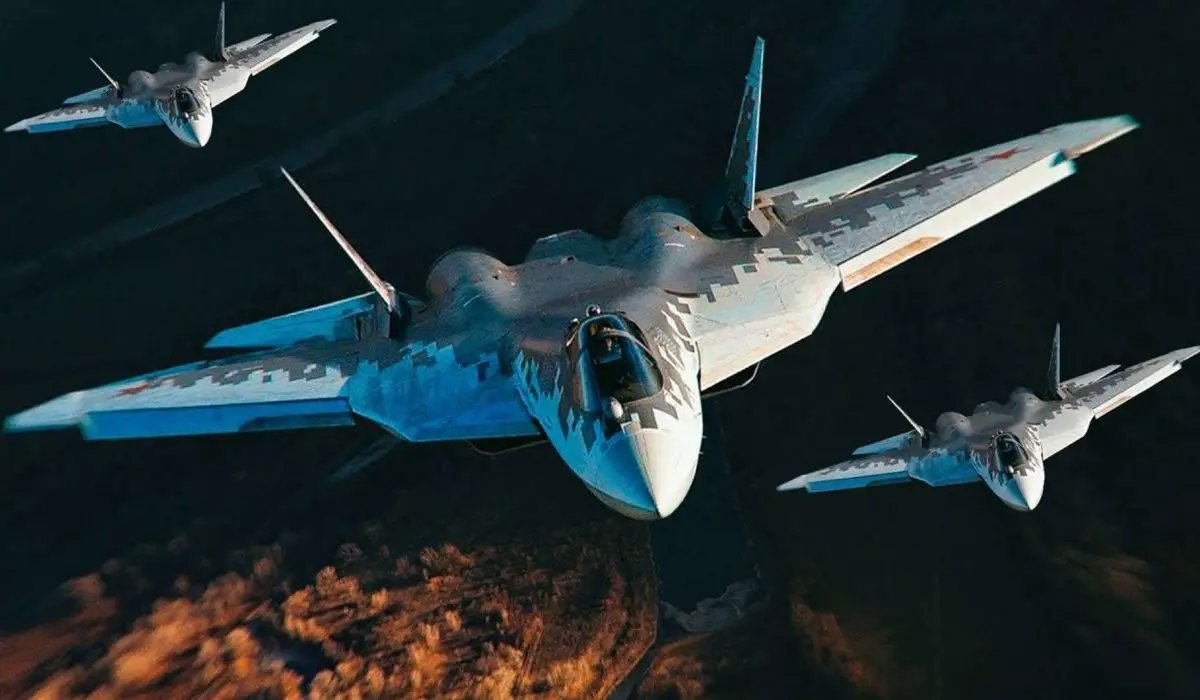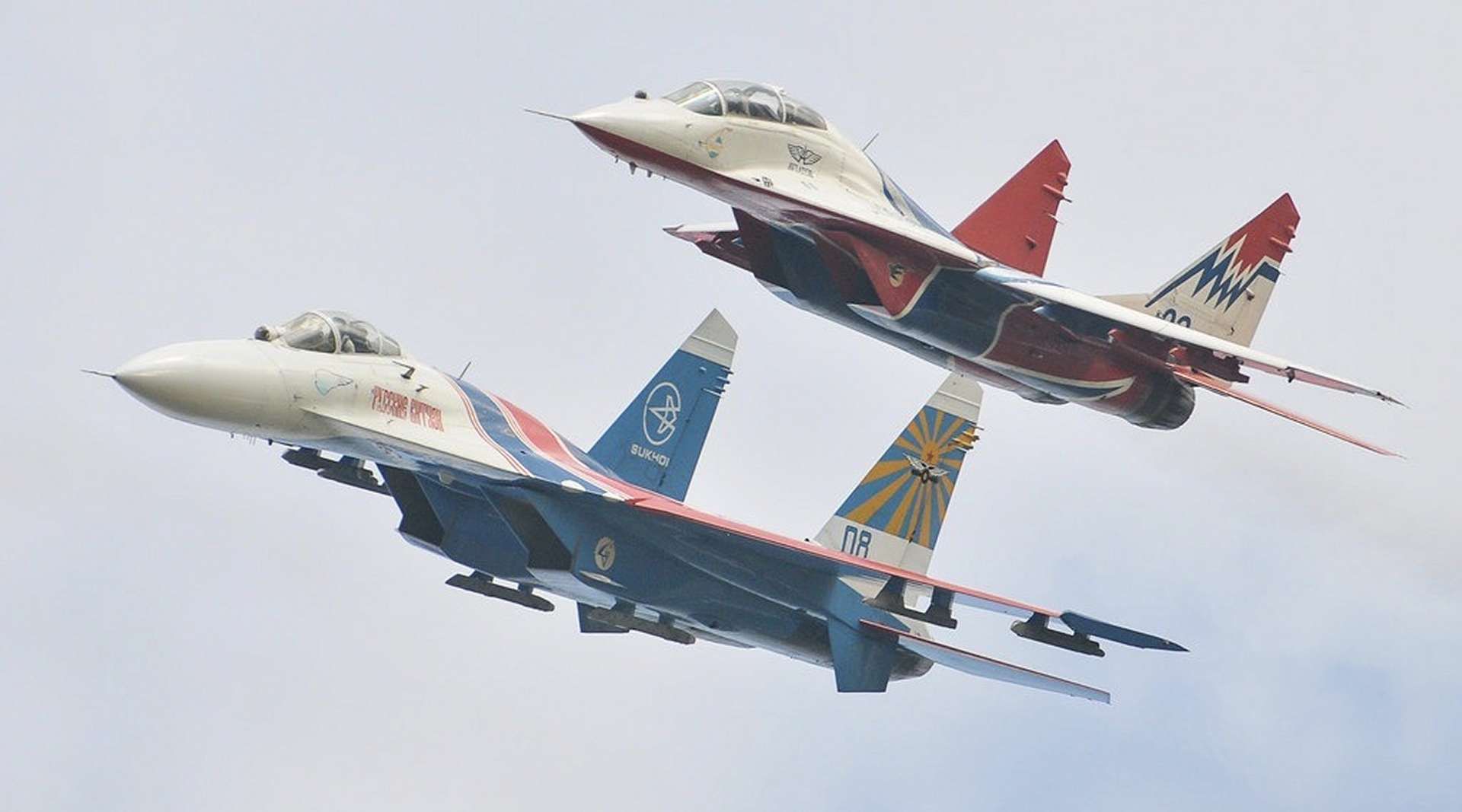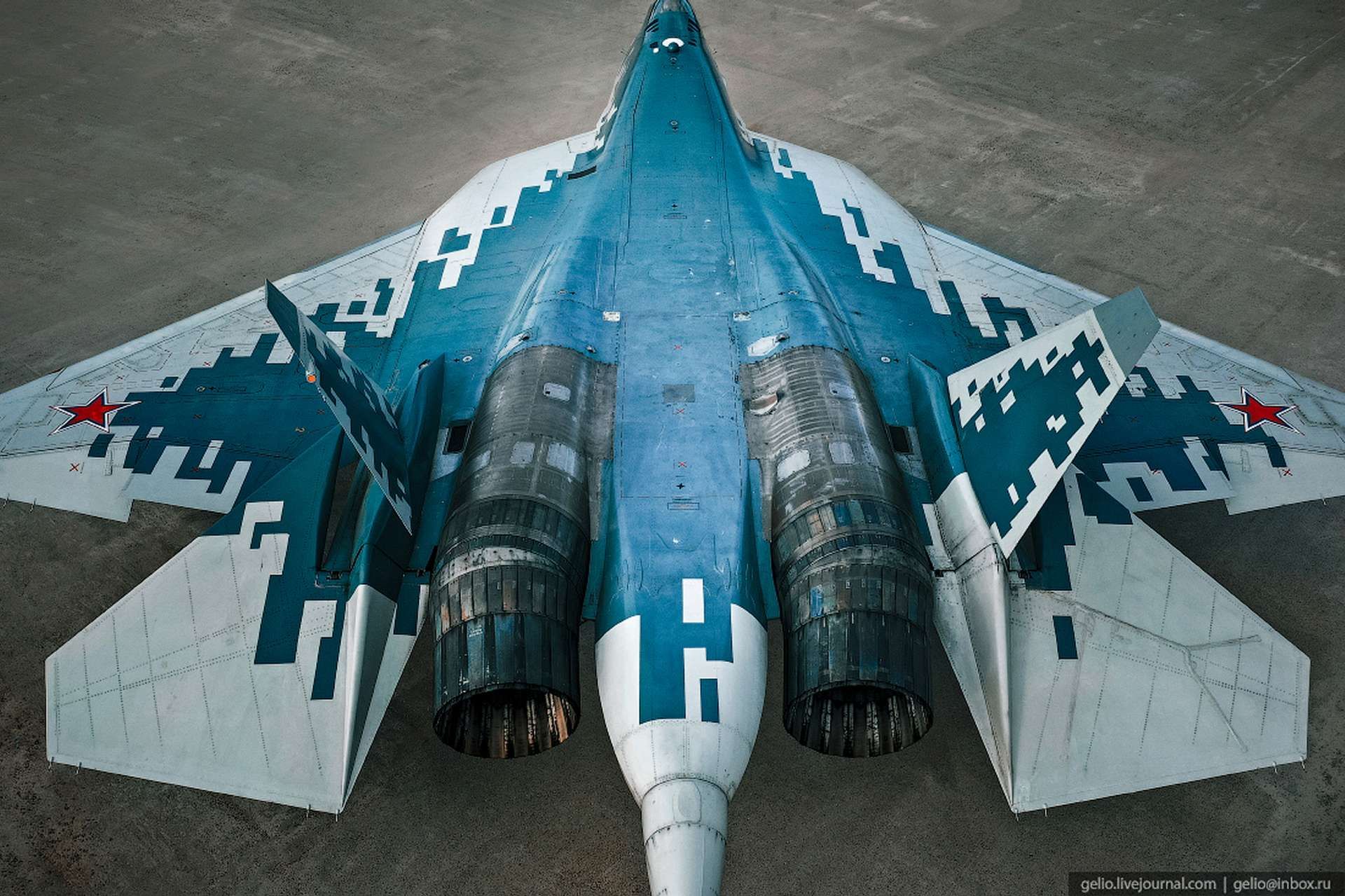Breaking News
Russia upgrades Su-57 Felon stealth fighter with drones for key strikes in Ukraine.
On July 29, 2024, Sergei Chemezov, General Director of Rostec, announced the integration of drones into the Su-57's weaponry. This development aims to expand and enhance the aircraft's functionality for combat tasks in Ukraine, which include targeting key infrastructure and logistic points. The Su-57, a central component of the Russian Air Defense Forces, operates alongside the Su-34 and Su-35, performing missions in dense enemy air defense environments.
Follow Army Recognition on Google News at this link

The United Aircraft Corporation (UAC) announced improvements in the Su-57's functionality to boost the aircraft's performance in dense enemy air defense conditions, leveraging its increased stealth and survivability features. (Picture source: Russian social media)
The 85th anniversary of the Sukhoi Design Bureau on July 29, 2024, highlighted several advancements in the Su-57 Felon, Russia's fifth-generation stealth aircraft. Alexander Dibin, Deputy Chief Designer of information and control systems at Sukhoi, presented the aircraft's advanced computing system. This system processes information from various onboard sources (optical and radar stations, weapons control, navigation, and reconnaissance), enhancing the pilot’s capability to control the aircraft and utilize its weaponry effectively.
The United Aircraft Corporation (UAC) also announced improvements in the Su-57's functionality to better conduct combat missions in Ukraine. These enhancements aim to boost the aircraft's performance in dense enemy air defense conditions, leveraging its increased stealth and survivability features. According to UAC, the Su-57, part of the central combat unit of the Russian Air Defense Forces, operates in conjunction with the Su-34 and Su-35. This combination enables a comprehensive response to emerging threats, with the Su-34 acting as the "workhorse," often covered by the Su-35.
Rostec, overseeing UAC, is also working on integrating drones into the Su-57’s armament to expand its capabilities. Sergei Chemezov emphasized that the current geopolitical situation presents new challenges for Sukhoi's specialists. Besides the Su-57, the Sukhoi Design Bureau is developing advanced systems such as the S-70 'Okhotnik' unmanned strategic bomber, the single-engine Su-75 Checkmate stealth fighter, and a heavy vertical takeoff and landing unmanned aerial vehicle. This latter project may be pursued in partnership with Yakovlev, a division of UAC, which recently expressed readiness to develop a fifth-generation vertical takeoff and landing aircraft. Chief Designer Mikhail Strelets noted that Sukhoi is continually improving the combat capabilities of its Su-57 aircraft to meet Russian military demands in Ukraine.

Sukhoi presented the aircraft's computing system, which processes information from various onboard sources (optical and radar stations, weapons control, navigation, and reconnaissance), enhancing the pilot’s capability to control the aircraft and utilize its weaponry effectively. (Picture source: Zvezda News)
The integration of drones into the Su-57 Felon stealth fighter is expected to impact Russian operations in Ukraine, enhancing the precision and coordination of strikes on critical infrastructure and logistical targets. The combination of the Su-57's stealth features with drone capabilities could complicate Ukrainian defenses' ability to counter these attacks. However, with only about 15-20 Su-57s in service, each aircraft is a high-value asset. Ukrainian drone strikes have highlighted the vulnerability of these advanced fighters, presenting logistical challenges for Russia in maintaining its fleet. While the upgrades could offer tactical advantages, they also increase the strategic risks associated with deploying the Su-57 in the conflict.
On April 26, 2024, Army Recognition reported that Major Ilya Yevlash, spokesperson for the Ukrainian Air Force, provided information on the use of the Sukhoi Su-57 Felon by the Russian Air Force in Ukraine. Despite its advanced capabilities, Russian forces have been cautious, keeping the Su-57 away from Ukrainian air defenses. The Su-57 was reportedly used in an attack on the Trypillia Thermal Power Plant near Kyiv, incapacitating its operations. This plant is crucial for stabilizing Ukraine's national grid, with a production capacity of 1,800 MW. Further strikes targeted railway and logistics infrastructure in Smila and Balaklia, causing damage and civilian injuries.
On June 28, 2024, the Russian Ministry of Defense included the Su-57 as part of the Weapon Z series, a new category of advanced weapons systems. This series includes AI-equipped drones, the hypersonic glide vehicle Avangard, and nuclear delivery systems Poseidon and Sarmat. The Su-57, sometimes referred to as a "miracle weapon" or "Wunderwaffe" by anti-Russian partisans, aims to match the capabilities of the F-22, though specific details remain limited. A reported strike may have destroyed one Su-57 unit, potentially reducing the operational fleet to 25 units, a number generally considered insufficient for an effective fleet.

The Su-57, known as the Felon, is Russia's first stealth aircraft developed to replace the MiG-29 and Su-27 as part of the PAK FA program initiated in 1999. (Picture source: Russian social media)
The Su-57, known as the Felon, is Russia's first stealth aircraft developed to replace the MiG-29 and Su-27. As part of the PAK FA program initiated in 1999, the twin-engine fighter combines stealth, supermaneuverability, supercruise, integrated avionics, and a substantial payload capacity. Despite early production delays and technical challenges, the Su-57 entered service with the Russian Aerospace Forces in December 2020. Its design emphasizes stealth with features like a wide blended wing body, canted vertical stabilizers, thrust vectoring, and extensive use of composites. These characteristics, along with radar-absorbing materials and meticulous structural design, significantly reduce its radar cross-section (RCS).
The Su-57’s internal weapon bays and stealth features enable it to carry a diverse array of armaments, including beyond-visual-range missiles and precision-guided bombs, while maintaining a low RCS. Its primary air-to-air missile is the R-77M, complemented by the short-range R-74M2. For ground and maritime targets, the Su-57 employs missiles like the Kh-38M and Kh-35U. Additionally, it can utilize external hardpoints for non-stealth missions, similar to its predecessor, the Su-27, which is also armed with a 30 mm GSh-30-1 autocannon.
Powered by two Saturn AL-41F1 afterburning turbofan engines, the Su-57 achieves a maximum speed of Mach 2 and a supercruise speed of Mach 1.3. These engines, integrated with the aircraft’s flight control system, feature full authority digital engine control (FADEC) for enhanced performance. Thrust vector control allows agile maneuvering across all axes, with a range of 3,500 km subsonic and 1,500 km supersonic, reaching a service ceiling of 20,000 meters. Future variants of the Su-57, such as the Su-57M, will incorporate the Izdeliye 30 engine, promising further improvements in performance, reliability, and reduced radar and infrared signatures.

Powered by two Saturn AL-41F1 afterburning turbofan engines, the Su-57 achieves a maximum speed of Mach 2 and a supercruise speed of Mach 1.3. (Picture source: LiveJournal/Gelio)


























